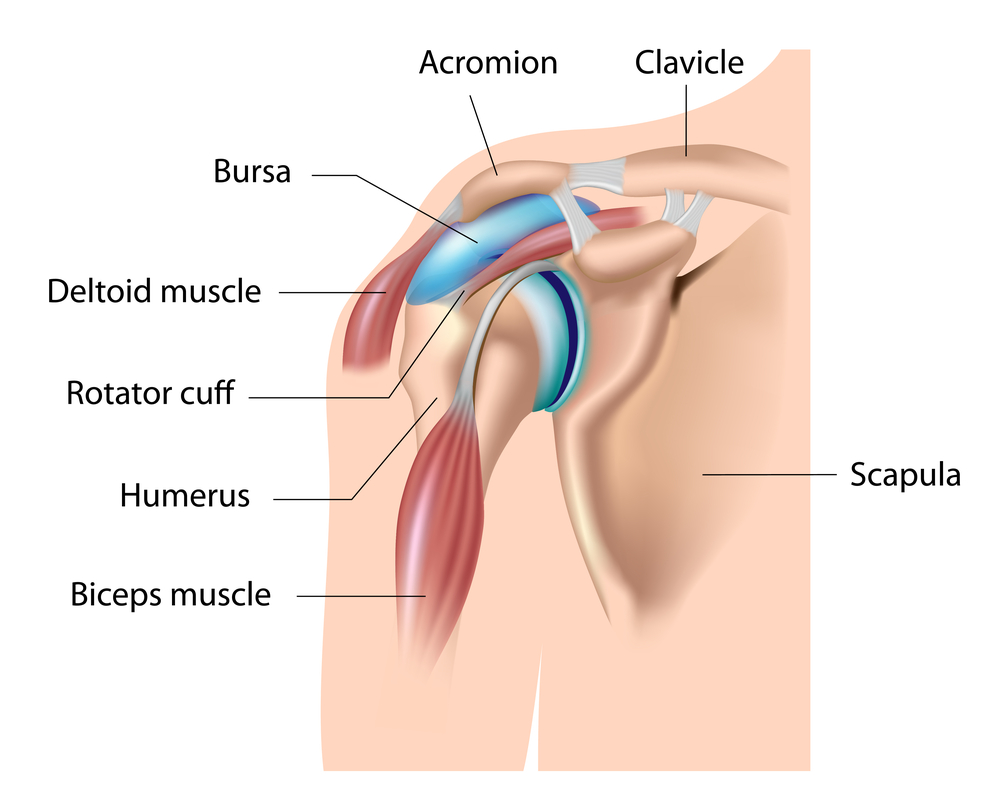Shoulder Pain: It May Be an Easy Fix
Shoulder pain at night, pain when lifting a briefcase, pain with overhead activities—even pain while brushing your hair is most commonly caused by shoulder tissues pinching together called impingement. Here is the impingement story.

To understand shoulder pain, you first have to know a bit about how the shoulder is held together: in large part, by the rotator cuff tendons and covered by the acromion. The rotator cuff is made up of tendons from the four key muscles that lift and guide shoulder motion. The acromion is the bone on top of the shoulder. It acts as a roof to the shoulder joint. When the space between the tendons and that bony roof narrows—which can be caused by bone spurs or inflammation—impingement occurs. The pain of impingement comes from the tendons of the rotator cuff muscles impacting the underside of the acromion. Think of it as putting a thumbtack between your belt and your waist. Every time you stick your stomach out, the pain occurs. (That might be a good training technique for your abdominal muscles...but a little unwise!)
Figuring out the cause of the impingement drives the treatment. If the acromion has formed a spur beneath it—from arthritis or trauma—removing the spur fixes the impingement. If the lining of the tendons becomes inflamed from repetitive overhead activities, such as pitching or tennis, shrinking the lining solves it. If the mechanics of the shoulder are poor, due to one muscle or another being weak (like a car whose tires are soft on one side), the shoulder moves abnormally, pinching the tissues. Strengthening those muscles solves that problem.
The key is to figure out what the cause is, and to avoid damaging the structures when trying to repair them. A careful physical exam with a good history taken often results in a full, accurate diagnosis. Each muscle can be tested individually, and the point of impingementis usually felt. A high-quality x-ray and MRI can differentiate between bony impingement and soft tissue swelling or tearing. (Unfortunately, the X-rays or MRIs are often not of sufficient quality to make the best diagnosis. The imaging technique matters!) Sometimes selective injections of the various tissues with short-acting anesthetics can be helpful, though they’re usually not necessary.
Impingement is so often caused by specific activities, or imbalances of the shoulder, that a careful physical therapy and strengthening program repairs the damage in most cases. “Careful” is emphasized because we often see the wrong exercises being done, due to lack of an accurate diagnosis. Injections of joint lubrication plus growth factors are replacing cortisone in our practice. They act as a natural anti-inflammatory, stimulate healing, and do not have cortisone’s downside of weakening the tissues. Surgery to remove the spurs, or chronically swollen bursa (a fluid-filled sac that reduces friction between tissues in a joint) is almost always curative, but it’s usually reserved for patients who fail our non-operative approaches.
Life with shoulder pain is not fun. Fortunately, the most common causes are completely fixable.
Dr Stone explains the structures of the shoulder and how impingement can affect your mobility.
Don't Know Why Your Shoulder Hurts? Use our Shoulder Pain Symptom Checker to learn more about your symptoms and possible injury conditions.
